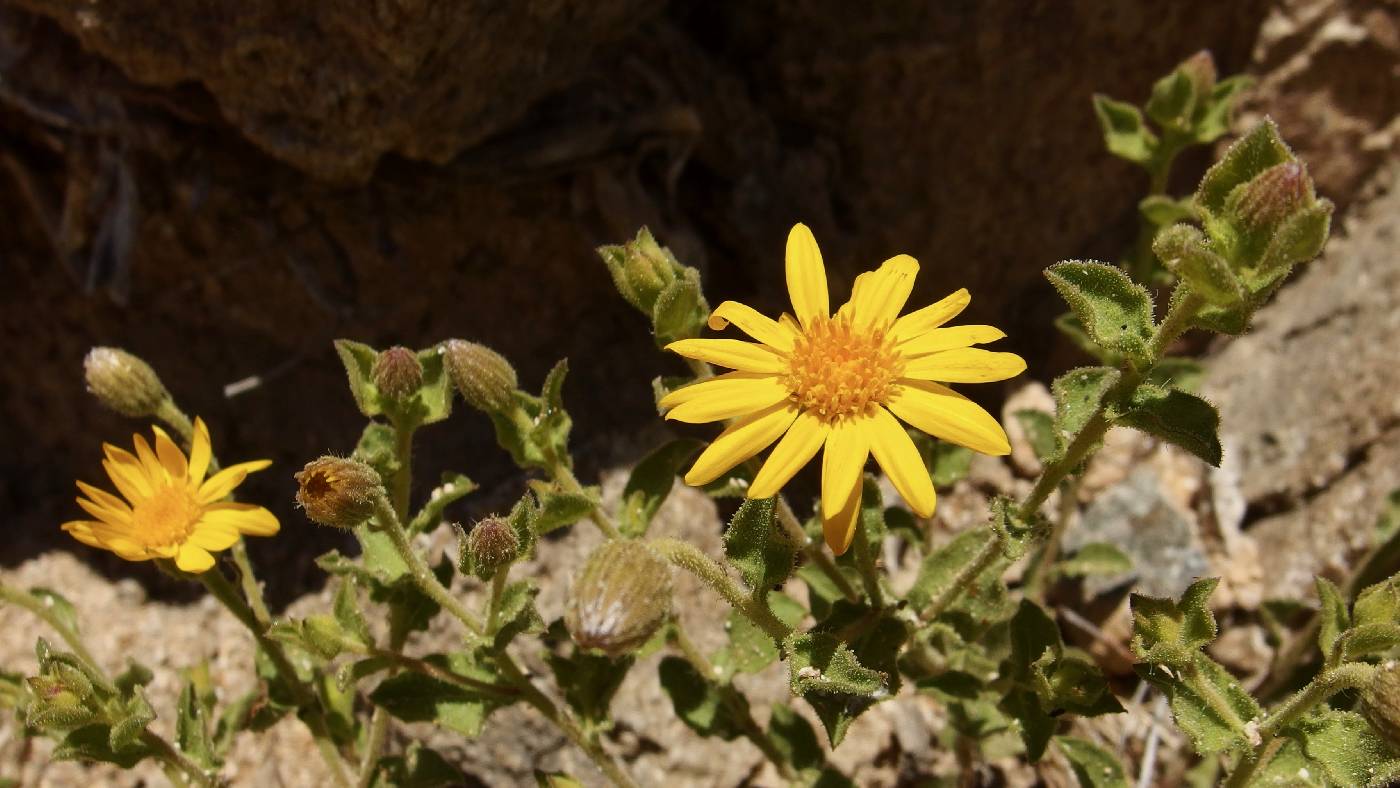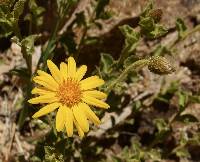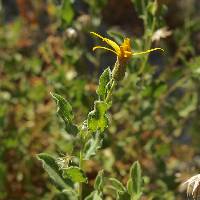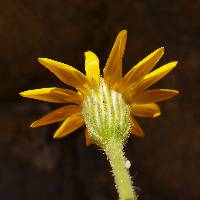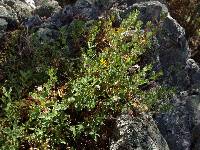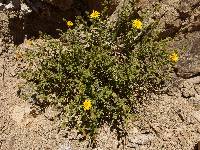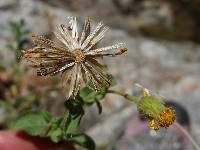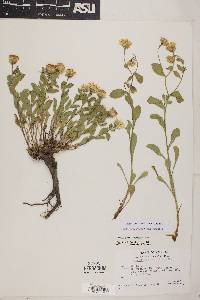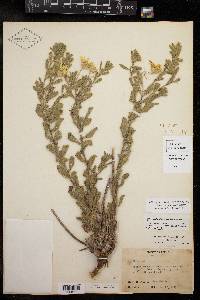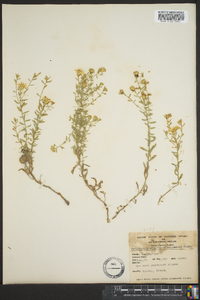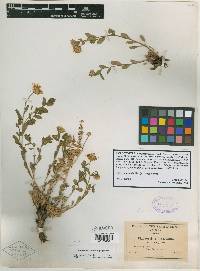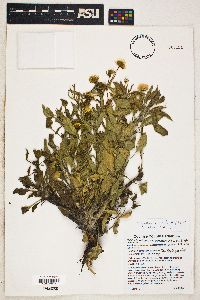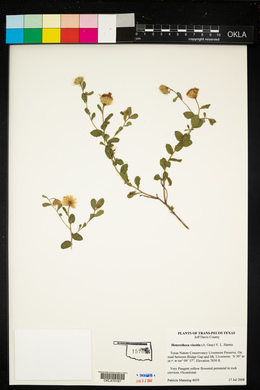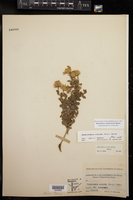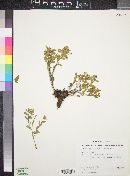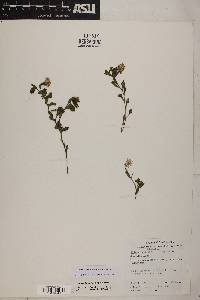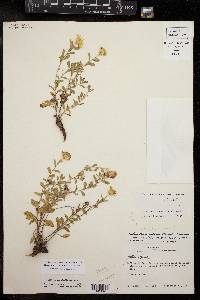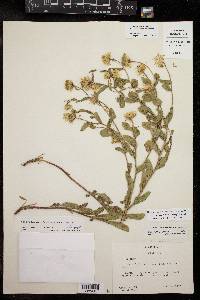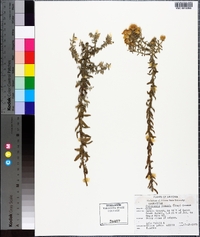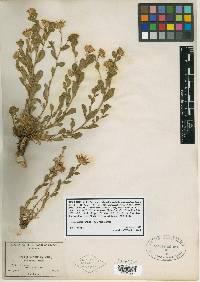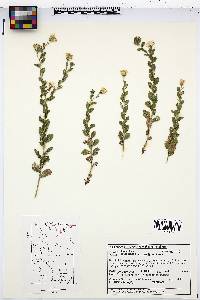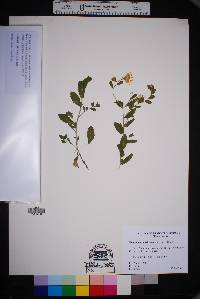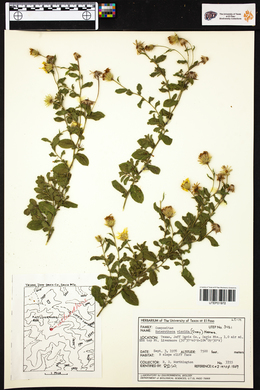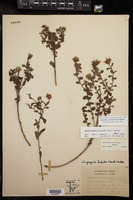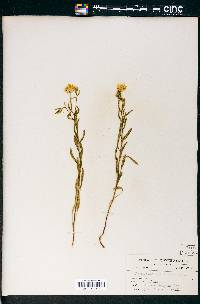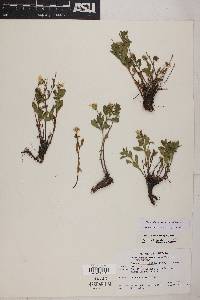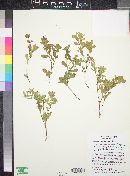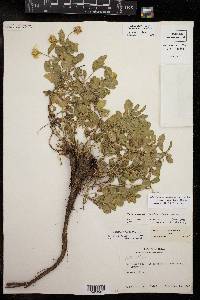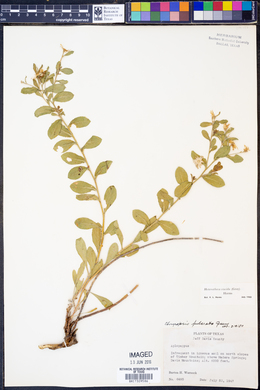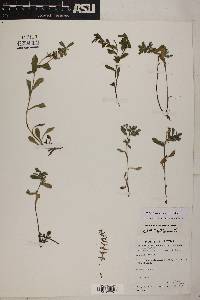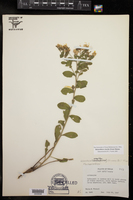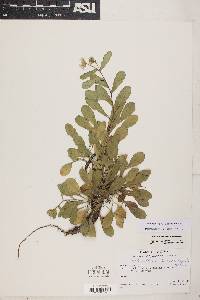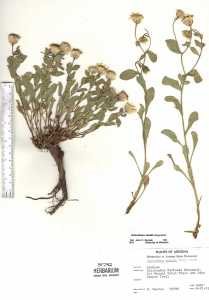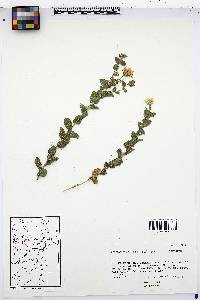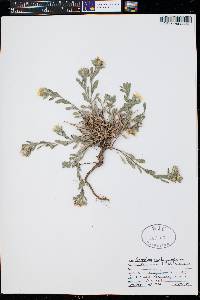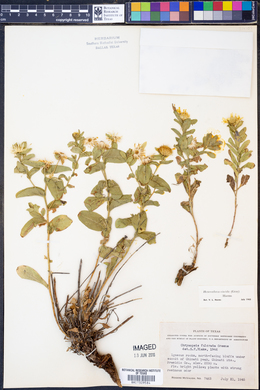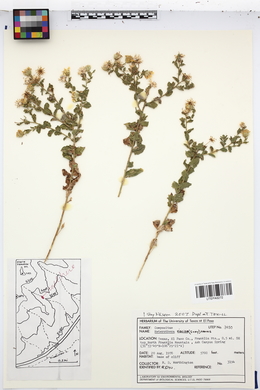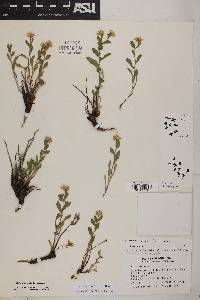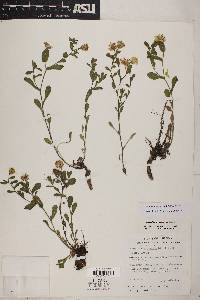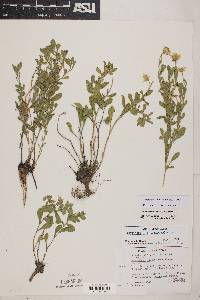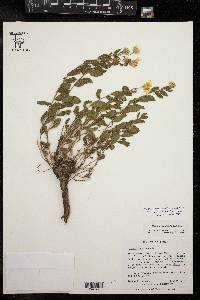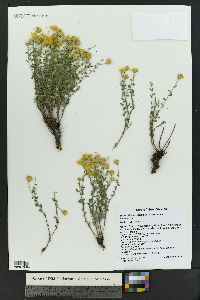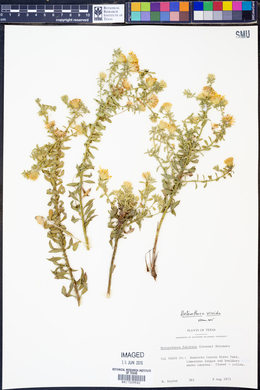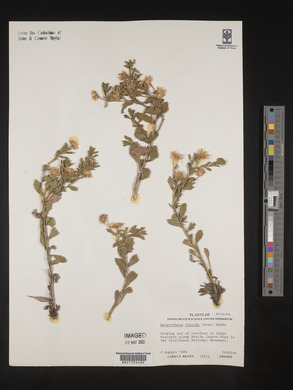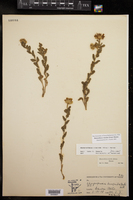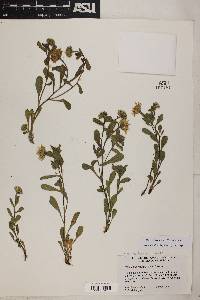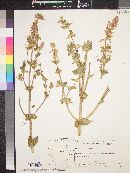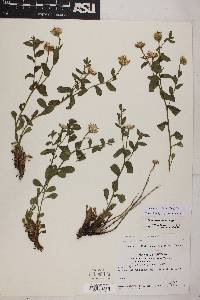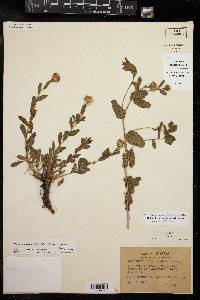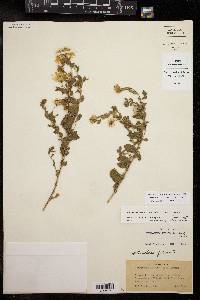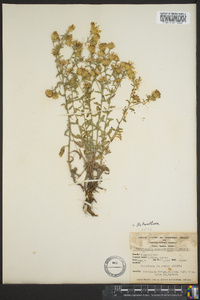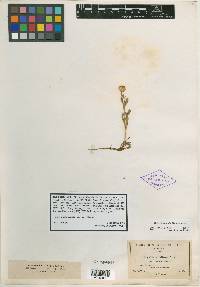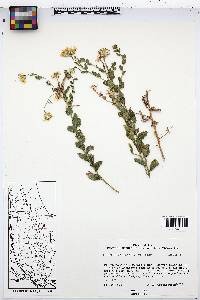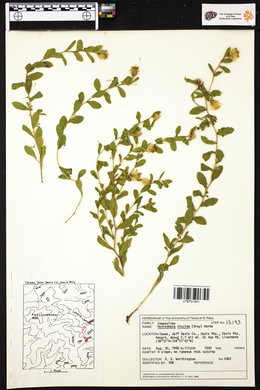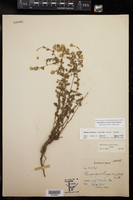
|
|
|
|
Family: Asteraceae
Cliff False Golden-Aster, more...cliff false goldenaster, cliff falsegoldenaster
[Chrysopsis villosa var. viscida A. Gray, moreChrysopsis viscida (A. Gray) Greene, Chrysopsis viscida var. ciliata] |
Perennials, 13-42 cm; taprooted. Stems 1-15+, ascending-erect (sometimes brown), appressed-strigose, mostly proximally long-hirsute, moderately to densely stipitate-glandular. Leaves: proximal cauline petiolate, blades ovate to oblanceolate, 23-51 × 5-15 mm, bases cuneate, margins entire, hispido-strigoso-ciliate (a few much longer spreading cilia near bases), apices acute to obtuse, mucronate, faces sparsely hispido-strigose, moderately to densely stipitate-glandular; distal sessile, blades lanceolate to ovate, 10-30 × 5-12.5 mm (sometimes slightly clasping, less so distally), margins flat or only remotely undulate, apices obtuse to acute. Heads 1-7, borne singly or in open, corymbiform arrays. Peduncles 10-36 mm, sparsely to moderately hispid, moderately to densely stipitate-glandular; bracts 0-2, linear-oblanceolate, usually greatly reduced. Involucres campanulate to hemispheric, 7.5-11 mm. Phyllaries in 4-5 series, lanceolate, unequal (outer lengths 1 / 5 - 1 / 4 inner), margins sometimes anthocyanic apically, faces sparsely strigose, stipitate-glandular. Ray florets 9-20; laminae 10-13 × 0.7-2.5 mm. Disc florets 16-76(-98); corollas ± ampliate, 5-7.5 mm, lobes 0.5-0.75 mm, sparsely hairy (0-0.25 mm). Cypselae monomorphic, obconic, compressed, 1.6-2.5 mm, ribs 4-7, faces moderately strigose; pappi off-white, outer of linear scales 0.2-1 mm, inner of 25-40 bristles 5-7 mm, longest weakly clavate. 2n = 18. Flowering May-Jul(-Oct). Clefts and crevices in cliffs and dry ledges, rocky slopes, in oak-manzanita chaparral, ponderosa pine and gambel oak woods, on igneous rocks and soils, rhyolite tuff; 1500-3000 m; Ariz., N.Mex., Tex. Heterotheca viscida grows in the mountains of southeastern Arizona, southwestern New Mexico, and trans-Pecos Texas. Plants from Texas generally have oblanceolate leaves and smaller heads and can be similar to forms of H. fulcrata var. arizonica and var. senilis. The species typically blooms earlier in the season than H. fulcrata.
FNA 2006, Kearney and Peebles 1969 Duration: Perennial Nativity: Native Lifeform: Subshrub General: Herbaceous perennials, to 42 cm tall, stems 1-15 or more, erect and ascending, herbage densely stipitate glandular, sticky, and with long hairs, these appressed, arising from a taproot. Leaves: Alternate, the cauline petiolate, ovate to oblanceolate, to 51 mm long and 15 mm wide, bases cuneate, margins entire, with long hairs, the apices acute to obtuse, mucronate at the tips, the faces sparsely strigose, moderately to densely stipitate-glandular; the distal leaves sessile, the blades lanceolate to ovate, to 30 mm long and 12 mm wide, sometimes slightly clasping, less so distally, the margins flat or only remotely undulate. Flowers: Heads radiate, rays yellow, 9-20, the rays to 13 mm long and 2.5 mm wide, disk flowers yellow, 16-76, the corollas more or less enlarged and expanded, 5-7.5 mm in diameter, involucres campanulate to hemispheric, 7.5-11 mm, subtended by 0-2 bracts, these linear-oblanceolate, usually greatly reduced, phyllaries in 4-5 series, lanceolate, unequal, the faces sparsely strigose and stipitate glandular, the inflorescences in groups of 1-7, borne singly or in open, corymbiform arrays. Fruits: Achenes obconic, compressed, 1-2.5 mm long, ribs 4-7, faces moderately strigose. Pappus off-white, the outer of linear scales to 1 mm, the inner of 25-40 bristles 5-7 mm, the longest weakly clavate. Ecology: Found on igneous rocks and soils, rhyolite tuff in dry areas, cliff ledges, rocky slopes, oak-manzanita chaparral, ponderosa pine and Gambel oak woods, from 5,000-9,500 ft (1524-2896 m); flowering May-October. Distribution: Arizona, Colorado, New Mexico, and Texas. Ethnobotany: Unknown Etymology: Heterotheca is from Greek heteros, different, and theke, ovary for the different achenes, while viscida means viscid, or sticky. Synonyms: Chrysopsis viscida, Chrysopsis villosa var. viscida Editor: LCrumbacher 2011 |
|
|
|
This project was made possible in part by the Institute of Museum and Library Services [MG-70-19-0057-19].
Powered by Symbiota

